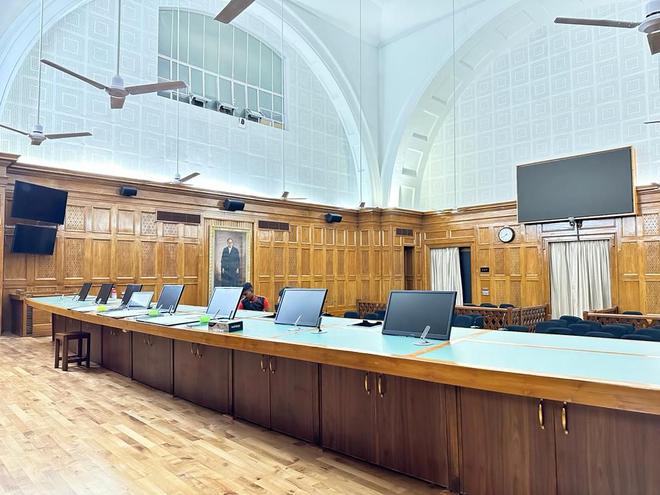The Supreme Court on Monday re-opened after summer vacations to tech-savvy, paperless courtrooms with free wi-fi for all.
The new courtroom decor has big screens for virtual hearings.
Wooden bookshelves with rows of legal texts, shoulder-high bundles of case files and haphazardly perched law books in cozy corners under the judges’ dais have been removed to make space for swanky screens mounted on walls and desks.
The Supreme Court called the design “futuristic”. It said the “digital enhancements have been implemented as part of green initiatives for optimum use of technology in justice delivery systems”.

CJI seeks lawyers’ feedback
Chief Justice of India D.Y. Chandrachud, who has steered the court into the digital age during and post the COVID-19 pandemic years, invited lawyers on Monday to give their feedback. Recent months had seen the Chief Justice insist that lawyer stick to their tablets or-ipads rather than bulky paper files, even gently ribbing senior lawyers such as Kapil Sibal and Tushar Mehta about their paper notes.
As of now, the upgrades have been made in the first three courtrooms. The enhancements include a state-of-the-art digital video conferencing and sound system with facilities to connect multimedia devices.
LED video walls have been installed to increase the visual impact of presentations, evidence and video recordings, creating an immersive and engaging courtroom experience.
‘Document cameras’
“Document cameras” have been installed in the courtrooms to enable the clear capture and real-time display of physical documents, facilitating seamless sharing of important legal materials, evidence, and exhibits. This technology simplifies the presentation of visual information and enhances the accessibility of courtroom proceedings
A software has also been developed by the Supreme Court to facilitate the advocates to upload reference material and citations relating to the matter.
The top court is fine-tuning a software to provide e-pass facility for advocates and litigants to access its premises.
Other milestones achieved so far include the launch of portals for filing Right to Information applications and e-appearance slips by lawyers to mark their presence in a case after a hearing. Students and lawyers can gain electronic access to reported judgments and case laws through the e-Supreme Court Reporter (e-SCR) facility. Besides, the court is successfully managing an e-office module in its Registry.







